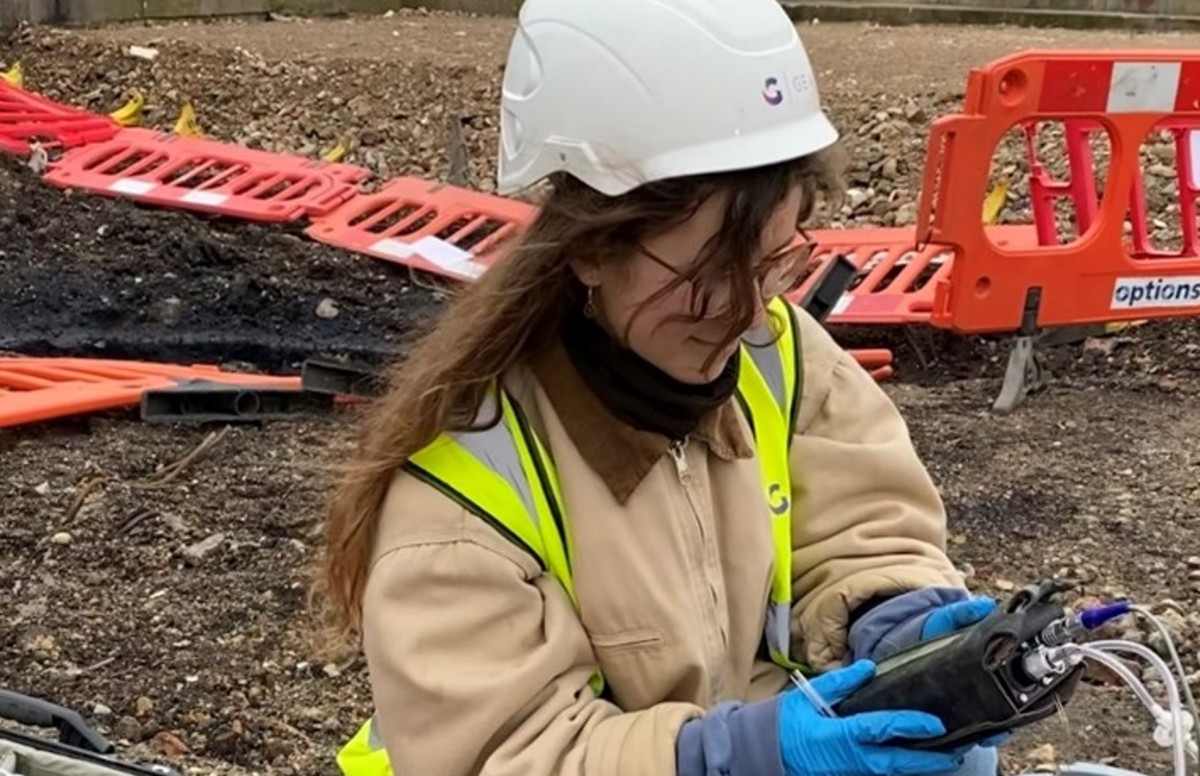9 Easy Facts About Geotheta Explained
9 Easy Facts About Geotheta Explained
Blog Article
An Unbiased View of Geotheta
Table of ContentsThings about GeothetaAn Unbiased View of GeothetaGeotheta Can Be Fun For AnyoneGeotheta Fundamentals Explained
They team up with civil designers, structural engineers, architects, and various other experts to integrate geotechnical factors to consider into the overall project style and building and construction procedure. This calls for reliable team effort, sychronisation, and communication to guarantee that the geotechnical aspects straighten with the task goals and satisfy regulative demands.Mining & Materials Engineering: Concepts of boring, infiltration rates, and elements affecting the selection of exploration method. Characteristics of nitroglycerins, shooting systems and blast patterns. Blasting methods in surface and below ground functions. Unique blasting techniques at excavation borders. Resonance and sound control. Mechanical and continual techniques to fragmentation, including longwall shearing and fullface boring.
Integrated evaluation of fragmentation and comminution operations. Used by: Mining & Products Engineering.
What Does Geotheta Do?
Bachelor's degree programs in civil, geotechnical, geological, and environmental design generally last four years and include general education training courses in English, social scientific research, and the liberal arts, as well as courses in innovative maths, structural geology, and liquid mineralogy. (https://geotheta.blog.ss-blog.jp/2024-08-02?1722614750)
Geotechnical engineering involves the analysis of the soil and rock conditions at a specific website, and their ramifications for the development of that site. As the majority of structures depend on the ground for assistance, it is without surprise that an in-depth understanding of the ground problems, and the viability of foundation systems, are important to the long-lasting security and efficiency of the structure or framework.
Being experts in the investigation of geological formations and ground behavior, geotechnical engineers do scientific examinations and screening to recognize the impact these geological formations may have on the design and building of structure, civil and framework projects. This competence is critical for the design and building and construction of structures, roadways, tunnels, dams, bridges, and supply of water and sewer systems.
The geotechnical group at Douglas Allies consistently speak with engineers, layout designers, designers, and building contractors to make referrals on layout and development proposals to ensure that the constructed frameworks are accordingly made for the ground problems. The style of footing systems requires to take into consideration the weight of the structure, the ability of the ground to sustain that weight with each other with motion tolerances and efficient building and construction.
Little Known Questions About Geotheta.
This task is substantially streamlined by the use of our Douglas Map geospatial system which makes this info readily obtainable in an easy to use internet internet browser interface. A geotechnical designer will route the drilling of boreholes and examination pits to collect dirt and other samples, and likewise evaluate surface area attributes and ground exposures to develop a geotechnical model of the subsurface conditions.
Depending on the job type and ground problems experienced, research laboratory screening might amongst various other things examine strength, compressibility, sensitivity and/or leaks in the structure of soil and rock examples. After this information is collected and looked at, the outcomes are used for a geotechnical version of the site, which is typically provided as areas throughout the website.

A geotechnical investigation by nature can just assess the ground conditions at the places pierced or dug deep into. All-natural variants in soil and rock conditions can happen throughout a website and between examination areas. It is for that reason great practice that the geotechnical engineer be retained throughout building and construction of the job to supply on-site confirmation that the ground problems run into are consistent with the expectations and recommendations supplied in the geotechnical examination record.
Geotheta for Beginners
Geotechnical designers use their thorough understanding of soil and rock to assess danger and address troubles on diverse framework projectsGeotechnical design is a specialist branch of civil engineering which takes a look at the behaviour of planet materials and the application of soil and rock mechanics. Geo Tech Engineering. As a geotechnical engineer, you will certainly examine the physical, mechanical and chemical residential properties of soil and rock in order to design structures, retaining frameworks and earthworks
Geotechnical engineering is closely connected to and overlaps with, both engineering geology and ground design - https://www.brownbook.net/business/52934980/geotheta/. It's possible to specialise in geotechnics or benefit a geotechnical company yet be called a design rock hound or a ground engineer. read more As a geotechnical designer, you'll need to: construct and preserve relationships with customers and various other specialists associated with the website, throughout each projectmaintain safety standards on site be conscious of expense effects when you make recommendationsstudy geological maps and aerial photos from a range of sources and from various time periodsexamine building prepares to see how practical they are based on your understanding of the siteinvestigate dangers or geological risks for the sitesearch for eco delicate features, such as garbage dump start to create accurate and interpretive ground modelsplan area investigationsdrill and analyse examples of bedrock, soil, groundwater and added products oversee various other experts on sitesolve technical issues as they emerge, such as unanticipated structures at drill sitesmonitor problems during and after construction to make certain structures are stable in the brief and long termadding data accumulated on site to your first researchcreating geotechnical computations, drawings, and two or three-dimensional computer system models analyzing the datamaking recommendations concerning the suggested use the website

Report this page